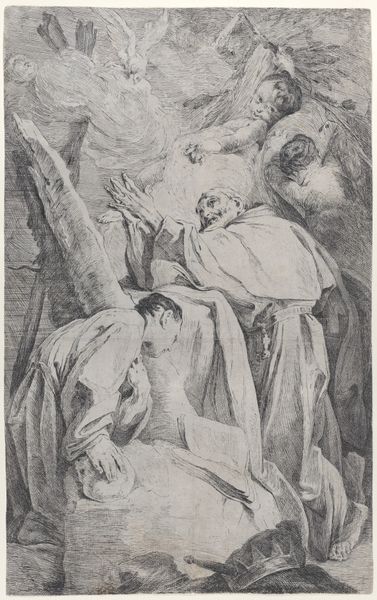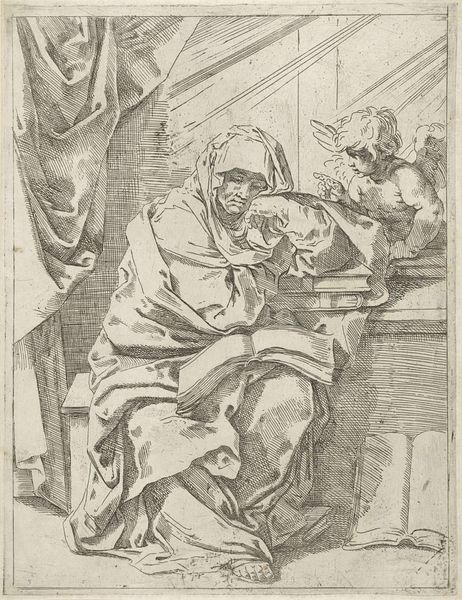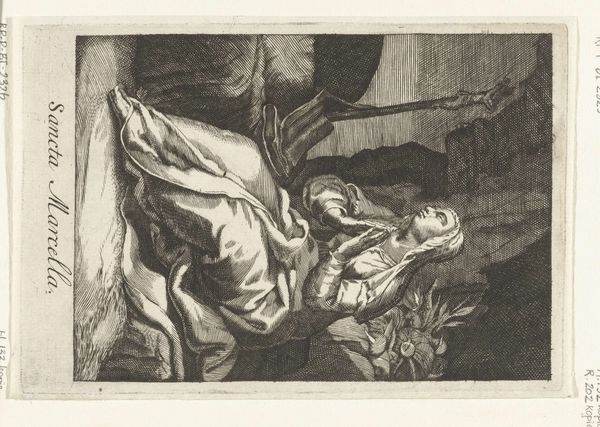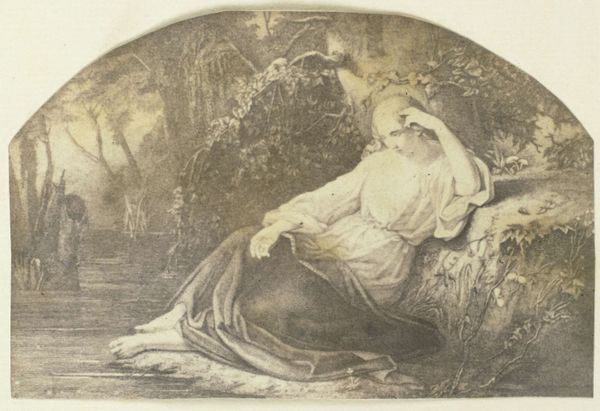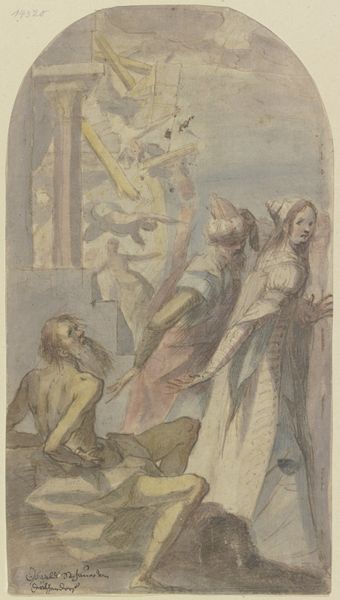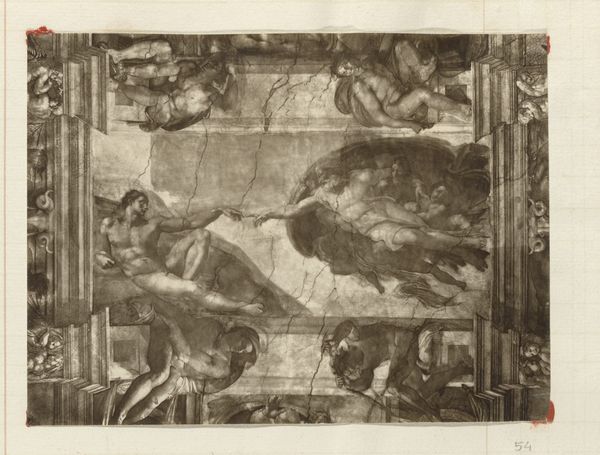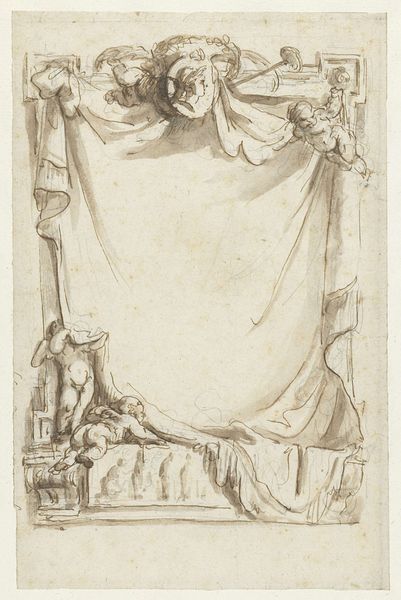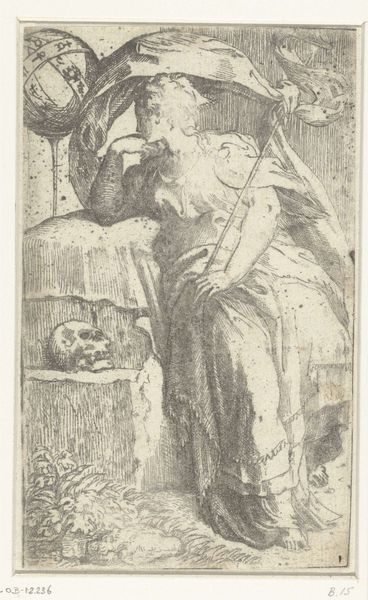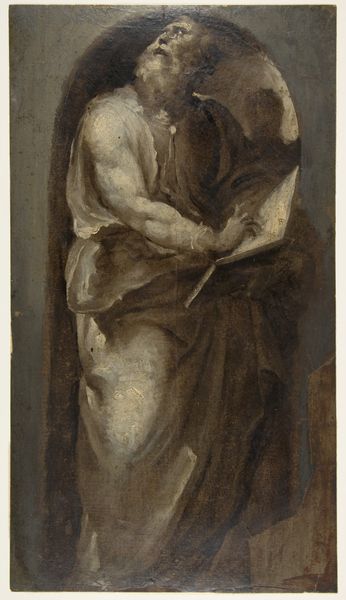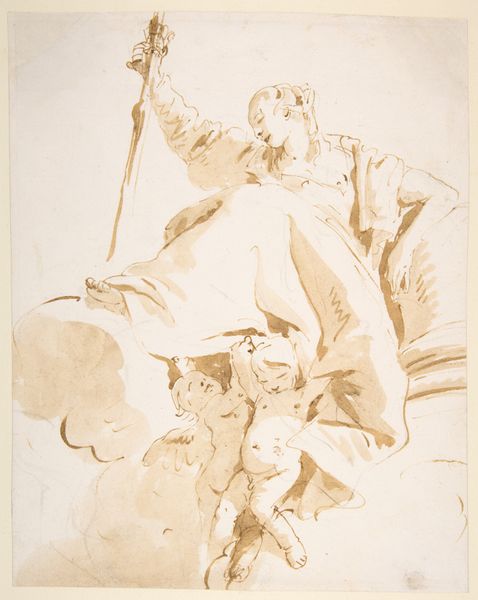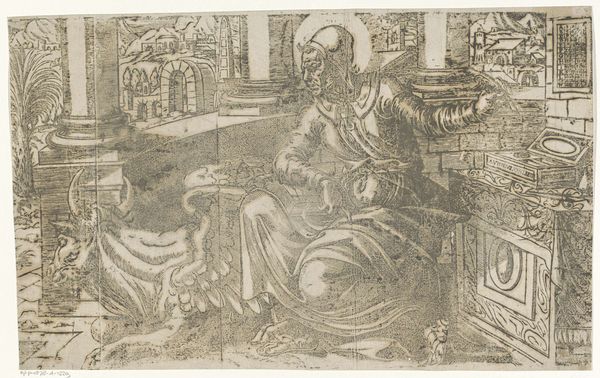
Copyright: Public domain
Editor: Nikolaos Gyzis painted "The Archangel, Study for 'The Grounding of Faith'" in 1895 using oil paint. It’s a rather dramatic piece; the dark background and the swirling drapery create a sense of movement. How do you interpret this work focusing on its form and structure? Curator: I find the artist's formal choices quite striking. Consider the limited palette and the broad brushstrokes which almost seem to dematerialize the figure. The contrast between the dark, undefined background and the luminous archangel is structurally compelling. The archangel, with its prominent wings, dominates the pictorial space and leads to a sort of tension within the piece, as we notice its gesture points downwards and is seemingly weighed down by the other figures in the artwork, almost like being forced in a different direction than it wishes to be. How might we decode these stylistic attributes to yield understanding? Editor: The swirling drapery you pointed out definitely adds to the feeling that it is weighed down. So, is it right to analyze that the dynamic lines are meant to show tension between forces within the angel? Curator: Precisely. The composition does not resolve in any classical way; instead, the energy coils inward and remains locked within the frame. Think of how the light catches certain aspects and forms— the wing, the angel’s garments and how the weight and light operate throughout. Consider how the brushwork contributes to this effect as well. Editor: I see now, it really focuses more on how it conveys a certain feeling, which, because of those tensions you noticed, doesn’t exactly end up hopeful! Curator: Indeed! These dynamic brushstrokes and strategic points of interest create visual complexity. Editor: Thank you. I now understand it by seeing it instead of understanding it. Curator: You're most welcome. It has been a pleasure viewing art in this manner.
Comments
No comments
Be the first to comment and join the conversation on the ultimate creative platform.
